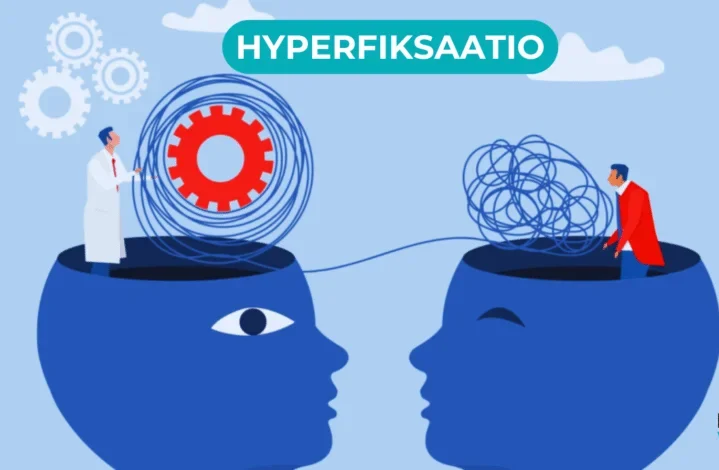Have you ever been so absorbed in a task that hours flew by without you noticing? Maybe you were coding, painting, researching a topic that fascinated you, or playing a video game. When you finally looked up, you realized you’d forgotten to eat, ignored multiple text messages, and lost track of time entirely.
This phenomenon has a name: hyperfiksaatio.
While the term originates from Finnish (hyperfixation in English), it describes a universal experience—one that’s particularly common among people with ADHD, autism, and other neurodivergent conditions. Hyperfiksaatio is characterized by an intense, all-consuming focus on a specific activity, subject, or interest. It can feel like a superpower when it helps you achieve incredible productivity or master a new skill. But it can also become a challenge when it disrupts your daily responsibilities, relationships, or self-care.
Understanding hyperfiksaatio means recognizing both its potential benefits and its pitfalls. This post explores what hyperfiksaatio is, why it happens, and how to harness its power while maintaining balance in your life.
What Is Hyperfiksaatio?
Hyperfiksaatio refers to a state of deep, prolonged concentration on a particular task or interest. Unlike regular focus, which can be shifted with relative ease, hyperfiksaatio creates a tunnel vision effect. Everything else fades into the background. Your brain becomes locked onto one thing, often to the exclusion of basic needs like eating, sleeping, or social interaction.
This intense focus isn’t necessarily voluntary. People experiencing hyperfiksaatio often describe feeling “pulled in” by their interest, unable to disengage even when they want to. The activity becomes all-consuming, sometimes lasting for hours or even days.
Hyperfiksaatio is closely associated with neurodivergent conditions, particularly ADHD and autism spectrum disorder. For individuals with ADHD, it may seem paradoxical—how can someone who struggles with attention also experience extreme focus? The answer lies in dopamine regulation. Activities that provide high levels of stimulation or interest trigger dopamine release, creating a rewarding feedback loop that makes it difficult to shift attention away.
The Bright Side: When Hyperfiksaatio Becomes a Superpower
Hyperfiksaatio isn’t inherently negative. Many people credit their periods of intense focus with helping them achieve remarkable things.
Accelerated Learning
When you’re hyperfixated on learning something new, progress happens quickly. Whether it’s picking up a programming language, studying a historical period, or mastering a musical instrument, hyperfiksaatio allows you to absorb information at an accelerated rate. The depth of engagement means better retention and understanding.
Creative Breakthroughs
Artists, writers, and creators often describe entering “flow states” where their best work emerges. Hyperfiksaatio can facilitate these moments of creative brilliance. The uninterrupted focus allows ideas to develop fully without distraction.
Problem-Solving Prowess
Complex problems require sustained attention and deep thinking. Hyperfiksaatio provides the mental stamina needed to work through challenging puzzles, debug complicated code, or analyze intricate datasets. Many innovations and discoveries have been made by people who could maintain intense focus for extended periods.
Passion-Driven Expertise
People who experience hyperfiksaatio often develop deep expertise in their areas of interest. This specialized knowledge can translate into career advantages, unique perspectives, and valuable contributions to their fields.
The Dark Side: When Hyperfiksaatio Becomes Overwhelming
Despite its benefits, hyperfiksaatio can also create significant challenges.
Neglecting Basic Needs
During periods of intense focus, it’s easy to forget about food, water, sleep, and hygiene. You might realize you haven’t eaten all day or stayed up all night without meaning to. This neglect can take a toll on your physical health over time.
Strained Relationships
When you’re hyperfixated, other people may feel ignored or deprioritized. Missing social events, forgetting to respond to messages, or being mentally absent during conversations can strain friendships and romantic relationships.
Incomplete Responsibilities
Bills go unpaid. Deadlines get missed. Household chores pile up. Hyperfiksaatio can cause you to drop the ball on important responsibilities because your attention is completely absorbed elsewhere.
Burnout and Exhaustion
Intense focus takes energy. After a hyperfixation episode, you might feel mentally drained or emotionally flat. This crash can make it difficult to engage with anything else, creating a cycle of boom and bust.
Difficulty Transitioning
Pulling yourself away from a hyperfixation can feel nearly impossible. Even when you know you need to stop, your brain resists the transition. This inflexibility can interfere with work schedules, appointments, and commitments.
Why Does Hyperfiksaatio Happen?
Understanding the neuroscience behind hyperfiksaatio can help explain why it occurs.
For people with ADHD, the brain’s reward system functions differently. Activities that provide immediate stimulation, novelty, or interest trigger dopamine release—a neurotransmitter associated with motivation and pleasure. When something captures your attention in this way, your brain essentially says, “More of this, please.” The dopamine feedback loop makes it difficult to disengage.
Similarly, autistic individuals may experience hyperfiksaatio as part of their intense interest patterns, sometimes called “special interests.” These deep engagements provide comfort, predictability, and joy. They can serve as a form of regulation, helping to manage sensory overload or emotional stress.
Neurotypical people can also experience hyperfiksaatio, particularly when engaged in activities they’re passionate about or that provide clear goals and feedback (like gaming or creative projects). However, it tends to be more pronounced and frequent in neurodivergent individuals.
How to Harness Hyperfiksaatio Without Losing Balance
If you experience hyperfiksaatio regularly, learning to work with it—rather than against it—can help you maximize its benefits while minimizing its drawbacks.
Set Boundaries Before You Begin
Before diving into a task you know might trigger hyperfiksaatio, establish clear boundaries. Set timers, schedule breaks, and create physical reminders (like sticky notes) to check in with your needs.
Use External Accountability
Tell someone what you’re working on and when you plan to stop. Having another person check in on you can provide the external structure needed to break away from intense focus.
Prepare Your Environment
Before entering a hyperfixation session, set yourself up for success. Have water and snacks nearby. Use the bathroom. Make sure your space is comfortable. This preparation reduces the physical toll of extended focus.
Channel Hyperfiksaatio Strategically
When possible, direct your intense focus toward tasks that align with your goals. If you know you tend to hyperfixate on certain activities, try to schedule them during times when you have flexibility and fewer competing responsibilities.
Build in Recovery Time
Recognize that hyperfiksaatio is mentally taxing. After an intense focus session, give yourself time to rest and recharge. Don’t expect to immediately jump into another demanding task.
Practice Self-Compassion
If you lose track of time, forget to eat, or miss an appointment because of hyperfiksaatio, be kind to yourself. Beating yourself up won’t change what happened. Instead, focus on what you can adjust moving forward.
Working With Hyperfiksaatio in Daily Life
Managing hyperfiksaatio is an ongoing process. Here are some practical strategies:
- Create routines: Consistent daily routines can help you maintain structure even when your focus narrows. Morning and evening routines, in particular, ensure basic self-care happens regularly.
- Use alarms and reminders: Technology can serve as your external brain. Set recurring alarms for meals, medication, bedtime, and other non-negotiables.
- Communicate with others: Let friends, family, and colleagues know about your focus patterns. This transparency helps them understand when you might be less responsive or need space.
- Identify triggers: Pay attention to which activities tend to spark hyperfiksaatio. Knowing your triggers allows you to plan accordingly.
- Balance passion with pragmatism: While it’s wonderful to pursue your interests deeply, make sure essential tasks don’t fall through the cracks. Consider dedicating specific time blocks to responsibilities before allowing yourself to dive into a hyperfixation.
When to Seek Support
For some people, hyperfiksaatio can significantly interfere with daily functioning. If you find that your periods of intense focus are:
- Consistently preventing you from meeting basic needs
- Damaging important relationships
- Causing you to miss work or school regularly
- Leading to health problems
- Creating significant distress
It may be helpful to work with a therapist or coach who understands neurodivergence. Cognitive-behavioral strategies, executive function coaching, and sometimes medication can all play a role in managing attention patterns more effectively.
Embracing Your Unique Focus Style
Hyperfiksaatio is neither purely good nor purely bad. It’s a cognitive pattern that comes with both advantages and challenges. Rather than trying to eliminate it entirely, the goal is to understand it, work with it, and create systems that allow you to thrive.
Your ability to focus intensely is a strength. With the right strategies and support, you can harness that strength while maintaining the balance needed for a healthy, fulfilling life. Whether you’re coding through the night, painting for hours, or researching a topic that fascinates you, remember that your unique way of engaging with the world has value.
The key is learning to ride the wave of hyperfiksaatio rather than being swept away by it.

















